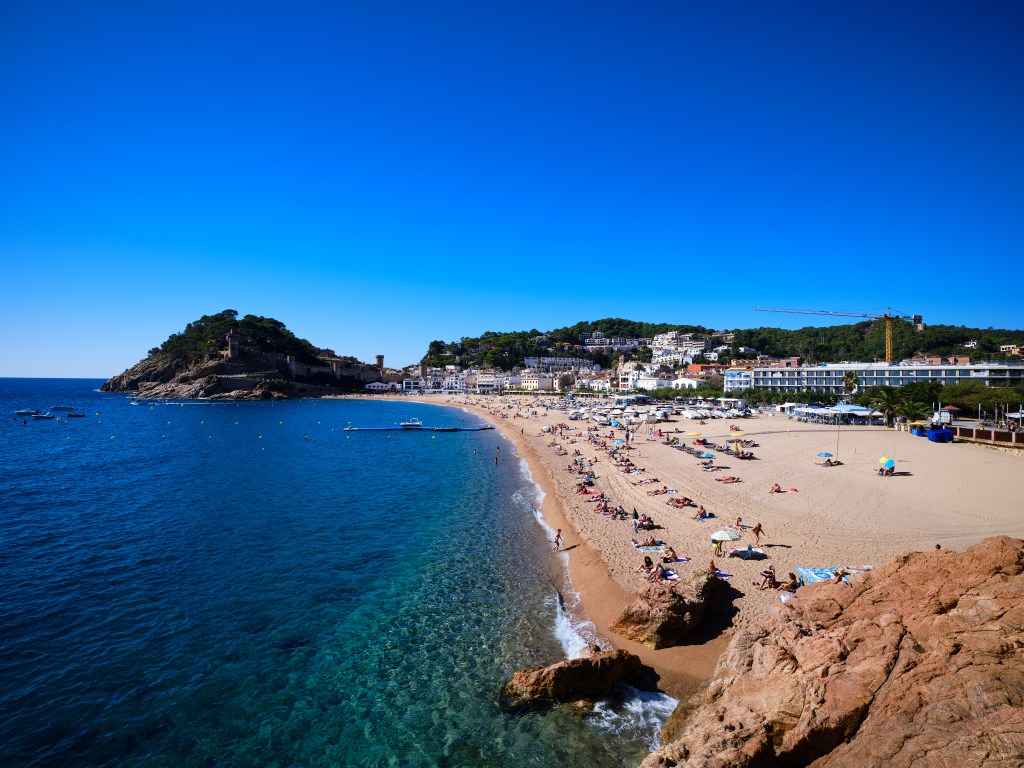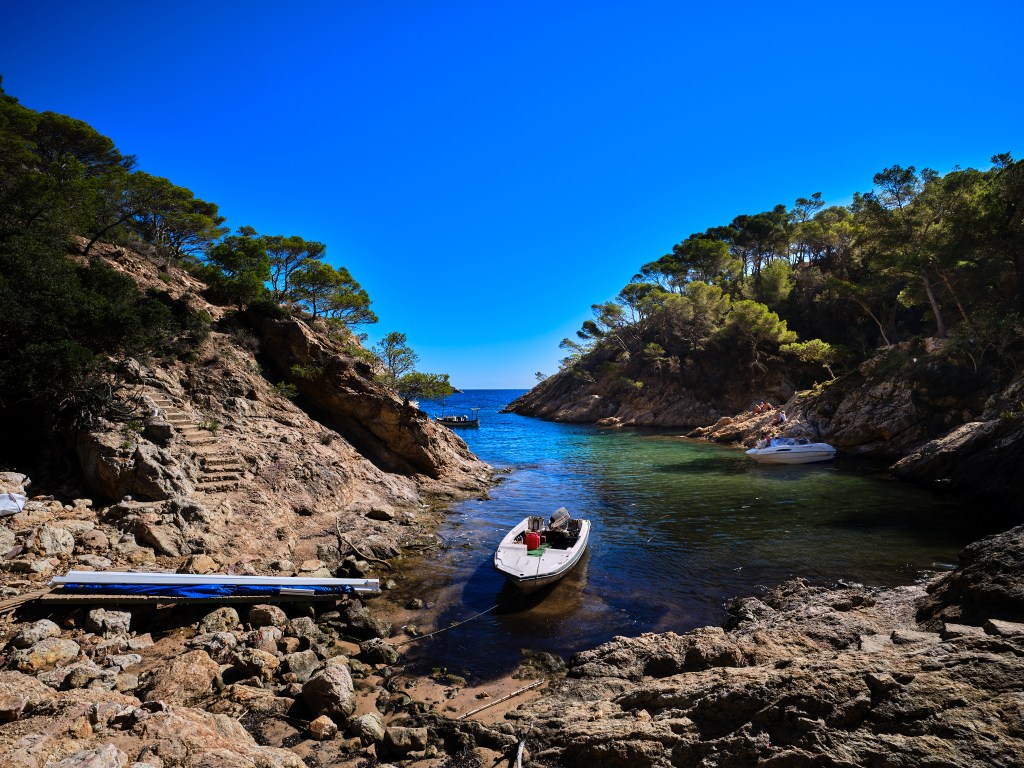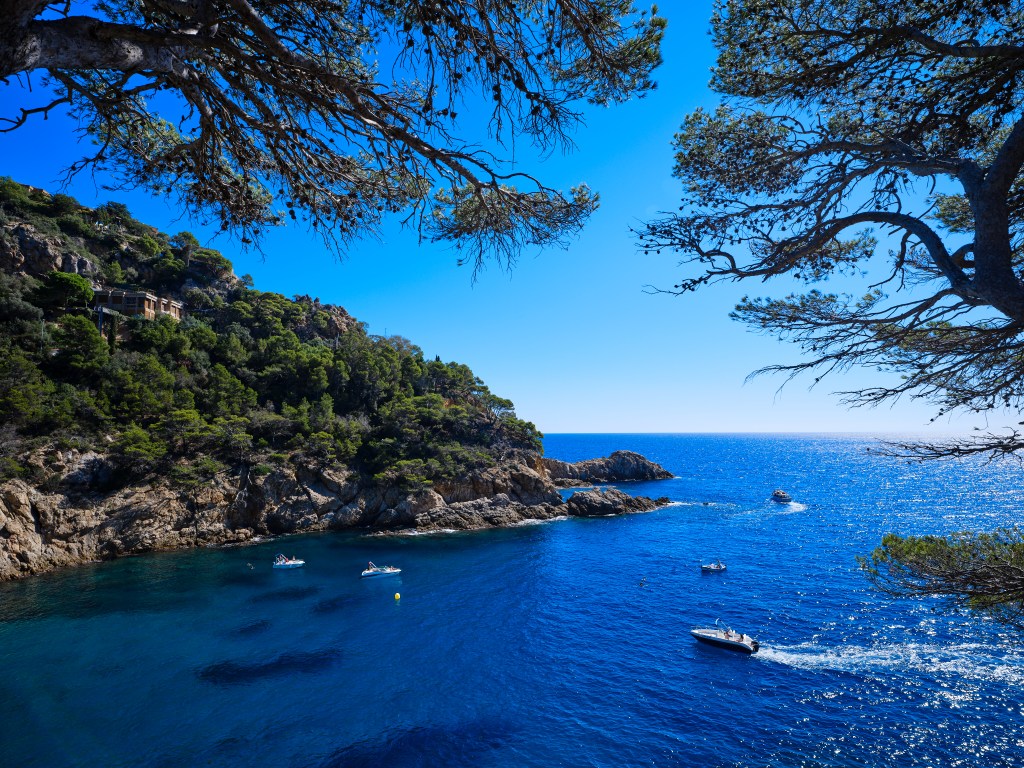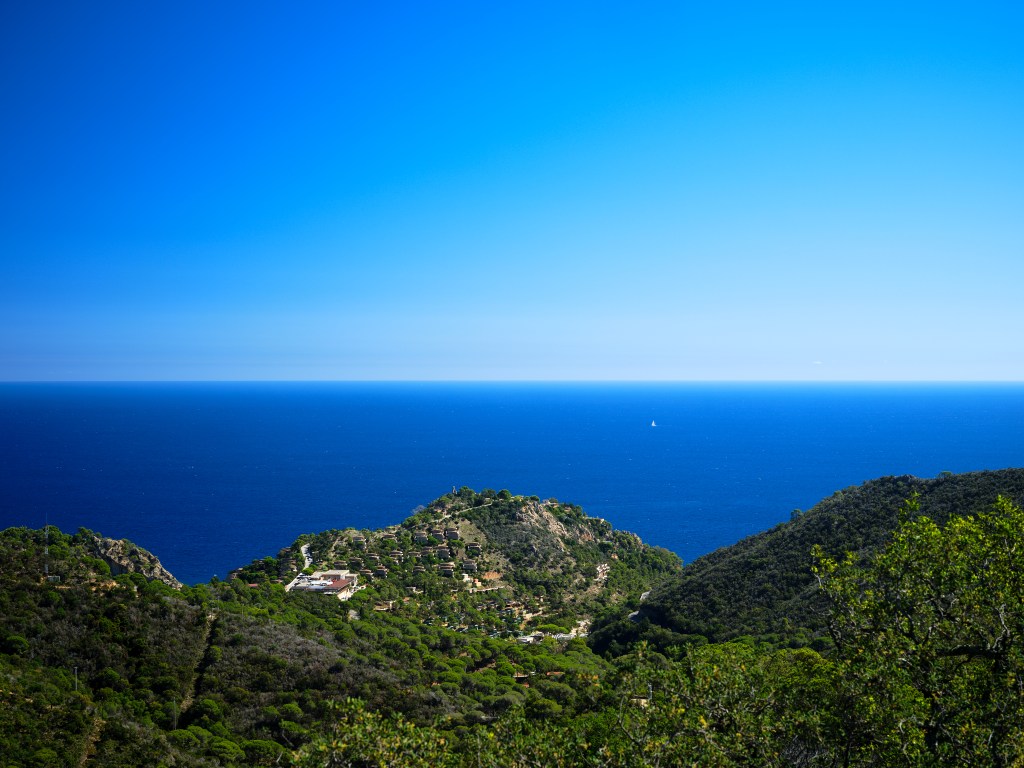Camí de Ronda

A short post with some images from a gentle hike along part of the Camí de Ronda from Tossa de Mar and back through the inland forest track.
Tossa de Mar was once a small fishing village, but of course now like pretty much everywhere on the Costa Brava it has become intensely focussed on mass tourism. Fortunately, this was late day in September and despite the amazingly clear skies and 30c temperatures there were remarkably few people. This was a walking trip so we did not stop in the town, but it is an interesting place to visit with a well preserved castle and fortifications in addition to the beaches.


The Camí de Ronda is a set of footpaths that run along the coast and which were historically important as part of a (seemingly not terribly effective) attempt to prevent smuggling, particularly during the early period of the Franco dictatorship where there was considerable hardship and control over all border traffic.
What remains today is a walk through a typical Mediterranean forest with some spectacular views over the sea and periodic drops down to small coves and beaches.




Walking north from Tossa de Mar you eventually arrive at the posh looking but industrial scale campsite that is ‘Pola Giverola Latruope Camp‘. While some effort has been taken to at least blend the architecture in to the hill-scape, this is still yet another example of Catalunya’s destruction of its landscape in the pursuit of profits over all else. The beach, like so many here, is clearly an artificial enhancement of the original bay, and the old foot path has been replaced by a road with no space left for pedestrians.




A little inland from the construction the track starts again at the edge of the Massís de Cadiretes, which fortunately is too hilly and far from the sea to be interesting to the developers.

Well, almost. The paths here are wide enough to drive along and were probably constructed to aid cork harvesting, although it looks like this was abandoned some time ago in the past. Catalunya being Catalunya, there are of course now 4x4s full of tourists driving through this ‘natural space’.

The inland areas are difficult for photography, as the vegetation blocks many views and there are few points of interest. One exception was the ruins of the Mare de Déu de Gracia church, built some three hundred years ago by local donations. What remains is curious today for the number of crucifixes fashioned from the surrounding forest’s twigs and bark.


From the church, it is a fairly short walk back down to Tossa de Mar, with some views out to sea from the higher points. In all we walked about 10km over about 5 hours, with stops to explore and eat lunch.

All images except for the last taken with the GFX100s and 23mm f4 (18mm equivalent in full-frame terms). The final image was taken with an 80mm lens using a polariser to cut down haze in the afternoon.
Maps with indications of the paths are available online or from the ayuntamiento’s Tourist Information Office in Tossa de Mar, although it might pay to ignore the attendant (ours was not very keen on the idea of going outside of the town – ‘it is just boring trees and rocks’!).
Categories: Landscape, Photography
WOW those blues!
Looks beautiful.